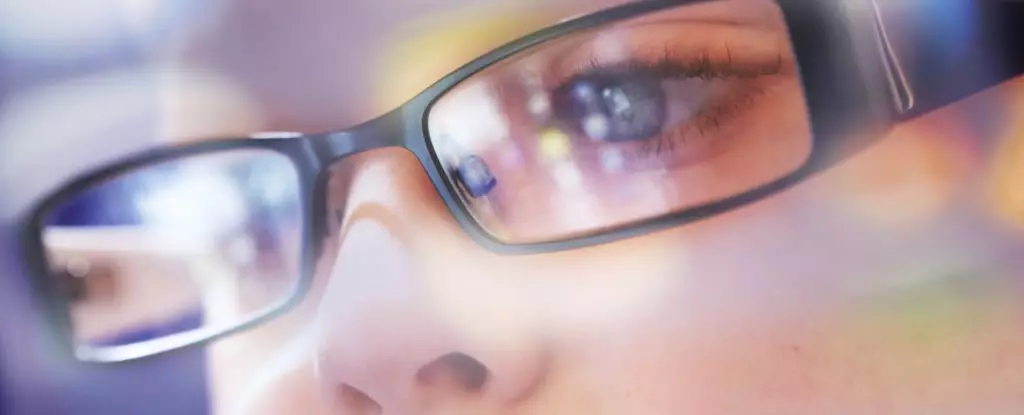The escalating number of myopia cases, or shortsightedness, among children and adolescents has emerged as a significant public health crisis. As contemporary lifestyles evolve, so too do the threats to visual health, prompting experts to predict a concerning trajectory for the future. Recent research indicates that by 2050, upwards of 740 million youths worldwide may face challenges in seeing distant objects clearly. This alarming estimate, derived from a comprehensive study that analyzed data from numerous nations up to 2023, sheds light on the urgent need for preventive measures and further investigation into this growing epidemic.
Myopia is not a newly encountered issue; however, its prevalence has markedly increased over the past three decades. The landmark study led by researchers at Sun Yat-Sen University reviewed an impressive compilation of 276 individual studies, encompassing the vision data of approximately 5.4 million young people. Findings indicate that the global prevalence of myopia jumped from 24% in 1990 to 36% in 2023 for those aged 5 to 19. The stark geographical disparities in myopia rates are particularly striking, with Japan reporting a staggering 86% prevalence among its youth, while countries like Paraguay remain at a mere 0.84%.
The implications of such statistics are troubling. If the current rates of myopia persist, its prevalence among young individuals could exceed 40% by the mid-century mark. East Asian nations, in particular, could witness an estimated prevalence of nearly 70%, raising questions about the underlying factors contributing to such a sharp rise.
Interestingly, the onset of the COVID-19 pandemic appears to have exacerbated the rising trend of myopia. Reports from various regions, including a significant study in Hong Kong, indicate a rapid increase in shortsightedness among young children during 2020. As educational institutions shifted to virtual learning, screen time for children skyrocketed, displacing essential activities like outdoor play—activities known to mitigate the risk of developing myopia. This situation underscores the multifaceted nature of this public health concern, blending environmental, genetic, and behavioral factors.
In their analysis, researchers highlight the developmental vulnerability of preschool-aged children, who undergo critical phases in visual development. They advocate for a focused effort to understand how these global changes impact myopia rates so health interventions can be tailored accordingly.
While genetics certainly influences the likeliness of developing myopia, it cannot solely account for the rapid increase in cases. Studies have shown a substantial connection between time spent outdoors and reduced myopia risks. For instance, children with two nearsighted parents significantly lower their risk if they engage more in outdoor activities. However, prolonged periods spent indoors—especially during the pandemic—have limited this protective factor.
The research team also examined educational patterns, noting that countries with rigorous early education systems, such as Singapore and Hong Kong, tend to see higher rates of myopia. Early exposure to formal education environments may heighten the risk as children spend more time focusing on close-up tasks rather than engaging in outdoor play. Thus, there is an urgent need to investigate the relationship between education duration and myopia occurrence more deeply.
Interestingly, the global review also underscores significant geographical and ethnic disparities in myopia prevalence. For example, myopia rates among children in Africa are approximately seven times lower than those in East Asia. The authors emphasize that while the reasons for these differences remain unclear, they warrant additional study. They posit that lifestyle variations, educational practices, and cultural factors may all play a role in this disparity.
Understanding these unique influences might be pivotal in creating individualized approaches to managing and preventing myopia. Given the rapid transitions many societies are undergoing, it becomes critical to discern trends in specific populations, particularly those experiencing swift changes in educational demands or living conditions.
With projections indicating a dire future for children’s eyesight, the call for action is clearer than ever. The necessity of conducting further research into the multifactorial causes of myopia cannot be overstated. Additionally, there is a pressing need for public health initiatives aimed at mitigating the risks associated with this condition. By prioritizing outdoor activities, reevaluating educational practices, and raising awareness about the importance of visual health, we can guide the next generation towards a clearer future. The collective responsibility lies with researchers, educators, and policymakers to forge a path that prioritizes the well-being of our children and safeguards their eyesight for years to come.

